Korean bulgogi lettuce wraps start with always tender pork tenderloin or beef stir fry strips. Combine it with a flavourful Korean sauce. A super easy dish to make, wonderfully delicious and an endlessly versatile dish. Enjoy plain, with rice and lettuce for wraps or add to a rice or noodle bowl.
Bulgogi is ridiculously easy to make, and a quick and delicious dish to use in any number of meals! In the Summer, I love to serve it as lettuce wraps, with rice and a spicy sauce. It can also be added to rice bowls, stir fries or even tacos.
Ingredients and Substitutions
Pork Tenderloin or Beef Stir Fry Strips – a single pork tenderloin or a tray of beef stir fry strips is all you need to make this dish, though you can certainly double everything up to feed more.
Mirin – is Sweet Japanese Rice Wine, that is fairly easy to find these days. I actually just ordered some more from Amazon and it was fast and economical. If you are a fan of Asian flavours and cooking, it’s a great addition to your pantry. If you don’t have Mirin, a decent substitute is white wine or rice wine vinegar, combined with some extra sugar. Add about 1 tsp more sugar to the marinade for these options. If all else fails, just use water (and a bit more sugar).
Gochugaru (optional) – are Korean red pepper flakes. They are great to have on hand to add some extra flavour to Korean dishes, and as they are dried, they keep well in the cupboard. If you don’t have any and you’d like a little spicy, you can substitute regular red pepper flakes instead.
To serve as lettuce wraps, as shown here:
Lettuce – if you’ll be using your bulgogi with lettuce wraps, look for either Boston lettuce or Leaf lettuce, both of which are easy to separate the large leaves from.
Rice – I generally use long-grain rice here, either white or brown, though Basmati rice works nicely, as well.
For a spicy Korean sauce, as shown here:
Gochujang – is Korean red pepper paste. You can substitute Sambal Oelek or even Asian Chili Garlic sauce here, in a pinch.
Step-by-Step Photos
- If using pork, slice the pork tenderloin into thin strips.
- Make the marinade by combining all the marinade ingredients. For a little spice (optional), add some Gochugaru (Korean Red Pepper Flakes), to taste.
- Add the marinade to the sliced pork and refrigerate 30 minutes – 8 hours.
- Heat a skillet over medium-high heat.
- Add the marinated pork and cook, stirring, until all the liquid has evaporated and the meat has browned.
Cook’s Notes
- It is easier to thinly slice the pork if it is partially frozen, so if you are starting with frozen pork, try to get to it before it thaws completely to slice it.
- Be sure to cut the meat into thin strips (as opposed to flat, planks of meat). So if you are cutting slices from the pork tenderloin, cut those slices into 3 or 4 thinner strips.
- Bulgogi is usually cooked until fairly dry, but you could also enjoy it slightly sauce as well, if you like. When the pork is cooked through and there is still some liquid in the pan, make a slurry of 1 Tbsp cornstarch stirred together with 1 Tbsp cold water and add a bit at a time to the simmering sauce until it thickens, as desired.
- Cooked bulgogi can be frozen to use from the freezer, as needed.
- You can also make this recipe using beef. Simply slice up a beef steak into thin strips and use in the same way as the pork.
5 great ways to enjoy bulgogi
- As bulgogi lettuce wraps, with rice and the spicy sauce
- Added to a rice or noodle bowl with fresh or stir-fried vegetables
- Added to a stir-fry (especially great if you have some in the freezer you can throw into any stir fry)
- Added to Bibimbap
- In a taco, with shredded lettuce and spicy sauce
Want to save this recipe?
Enter your email and I'll send it to your inbox. Plus, you'll get great new recipes from me every week!
By submitting this form, you consent to receive emails from Seasons and Suppers.
You can unsubscribe at any time.
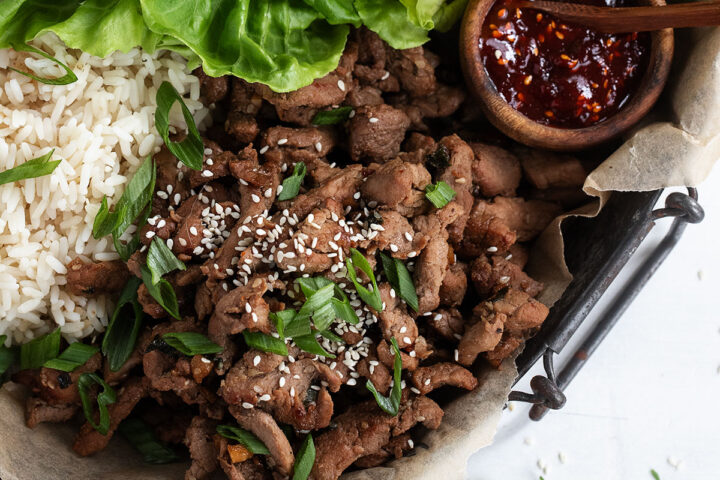
Get the Recipe: Korean Bulgogi Lettuce Wraps
Ingredients
For the Pork Bulgogi:
- 1 1/2 lb. pork tenderloin or beef stir fry strips, silver skin and any visible fat removed
Bulgogi Marinade:
- 1/4 cup soy sauce, low sodium recommended
- 1 Tablespoon white or brown sugar
- 1 Tablespoon Mirin, or white wine, rice wine vinegar or water plus an additional 1 tsp sugar
- 1 Tablespoon sesame oil, or olive oil
- 1 teaspoon sesame seeds
- 2 green onions, chopped
- 4 garlic cloves, minced
- Pinch of black pepper
- 1/4-1/2 tsp Gochugaru Korean Red Pepper Flakes, optional, plus more to taste, or a pinch of regular red pepper flakes, if you'd like a little heat
For cooking:
- 1 Tbsp vegetable oil, or other neutral cooking oil
For lettuce wraps:
- Large lettuce leaves, from Boston or Leaf lettuce
- Cooked white or brown long-grain rice, or Basmati
For garnish to serve:
- Sliced green onion
- Sesame seeds
Optional Gochujang Sauce:
- 2 Tablespoons gochujang Korean chile paste, or Sambal Oelek
- 1 Tablespoon soy sauce
- 1 Tablespoon rice vinegar
- 1 clove garlic, minced
- 2 teaspoon white or brown sugar
- 1 teaspoon sesame seeds
- 1 teaspoon sesame oil, regular or toasted
- 1 teaspoon light or dark corn syrup, or maple syrup (optional)
Instructions
- If starting with pork tenderloin, remove the silver skin and any visible fat from the pork tenderloin. Slice into thin pieces, then cut those pieces into 3 or 4 thin and long strips. Place into a large bowl or a zip lock bag.
- Mix up the marinade, by combining all the marinade ingredients and stir well. Pour over the meat in the bowl or bag and toss well to coat and combine. Cover and refrigerate at least 30 minutes or up to 8 hours.
- When ready to cook, heat oil in a skillet over medium high heat. Add all the pork with the marinade to the skillet and cook, stirring, until almost all the liquid has disappeared, 5-7 minutes. *Bulgogi is usually cooked until fairly dry and browned, but if you want a saucy bulgogi for some reason, don't cook off all the liquid. Make a slurry of 1 Tbsp cornstarch and 1 Tbsp cold water and add a bit at a time to the hot skillet, stirring after each addition, until desired sauce thickness is achieved.
- Serve with lettuce leaves and cooked rice and the optional Gochujang sauce (or any spicy Asian sauce will work here).
Notes
More Korean Recipes to Love!
Hi! I’m Jennifer, a home cook schooled by trial and error and almost 40 years of getting dinner on the table! I love to share my favourite recipes, both old and new, together with lots of tips and tricks to hopefully help make your home cooking enjoyable, stress free, rewarding and of course, delicious!


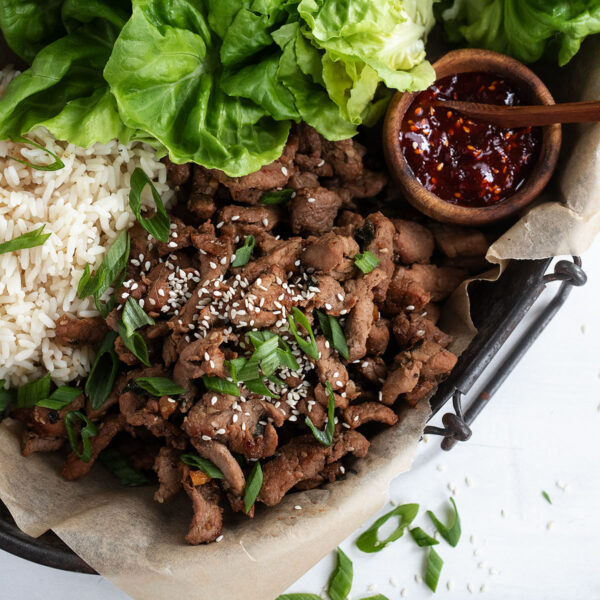
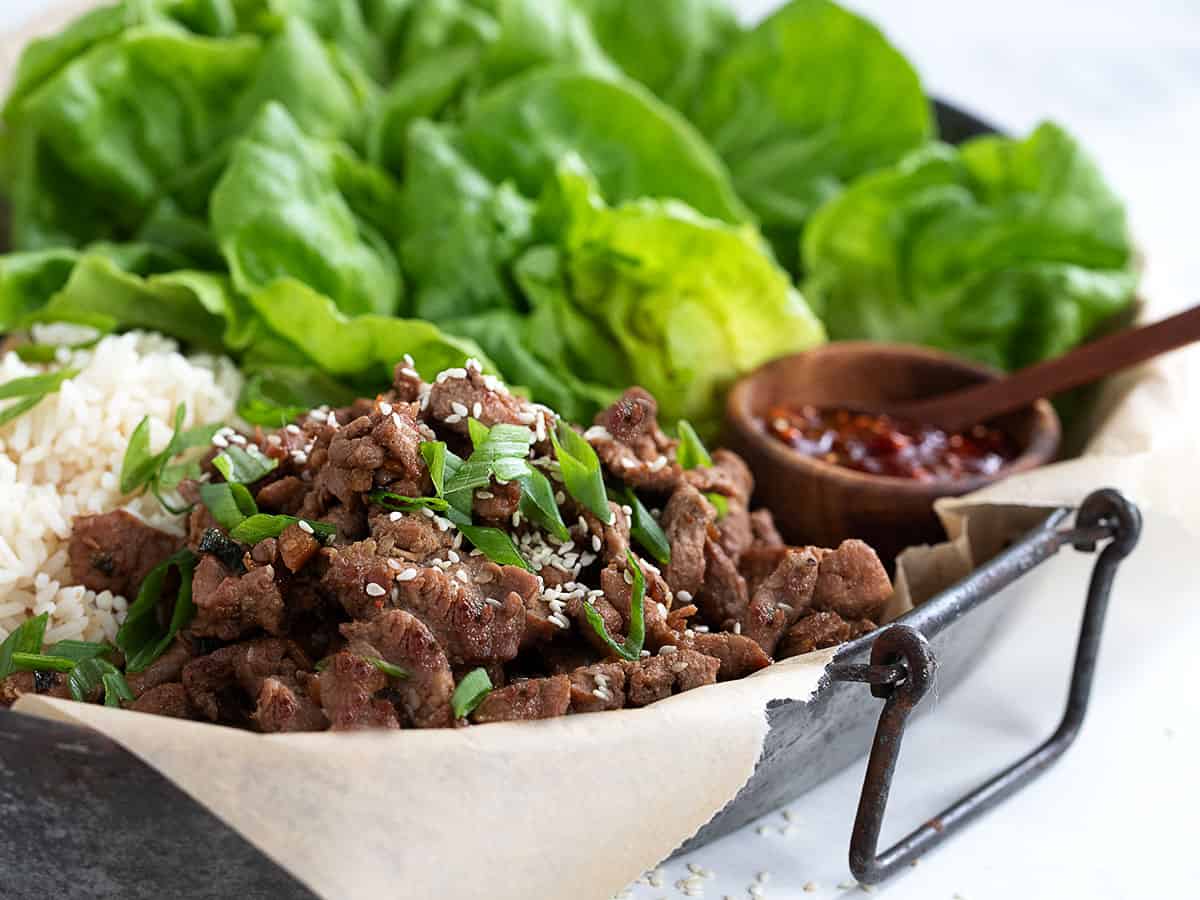
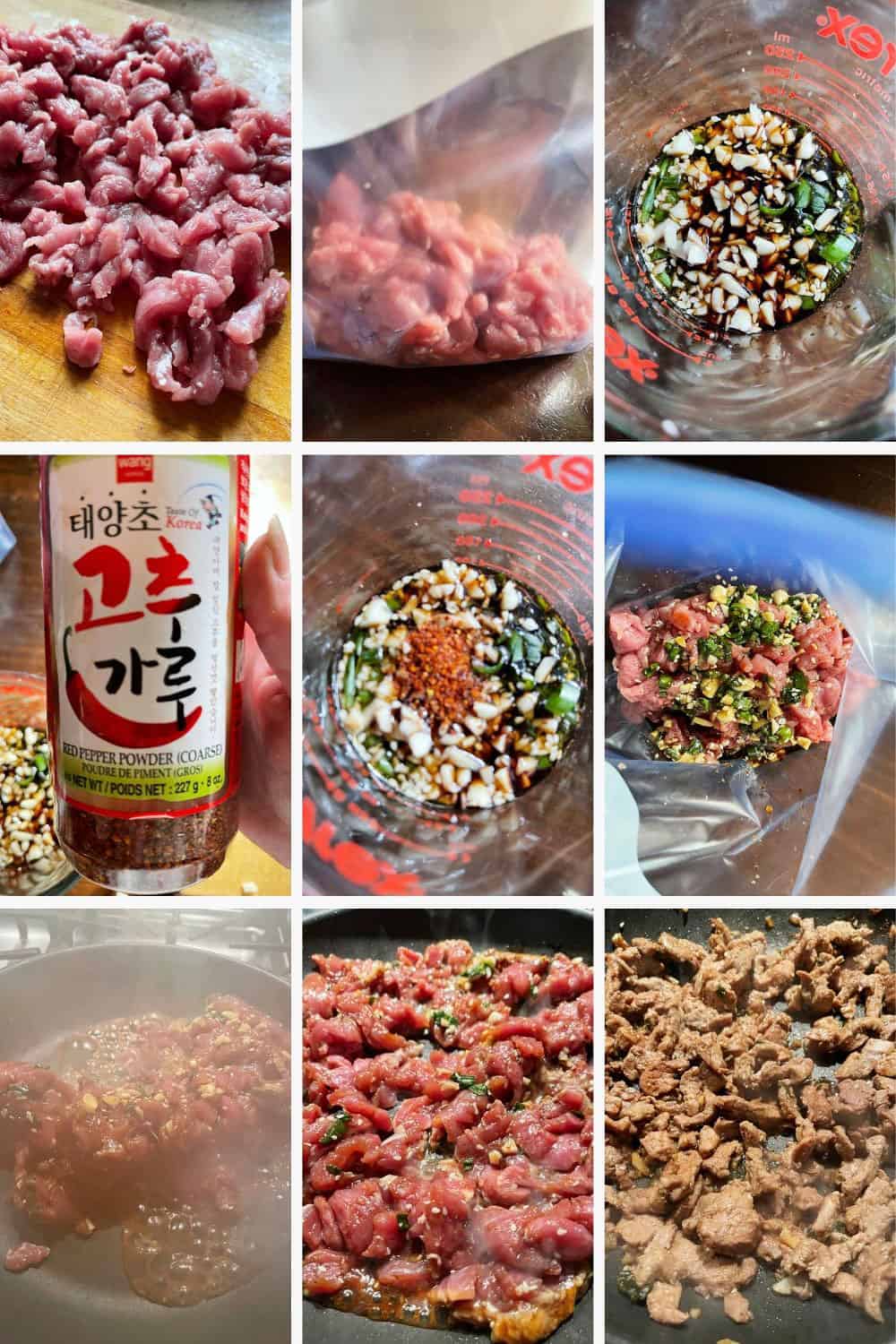
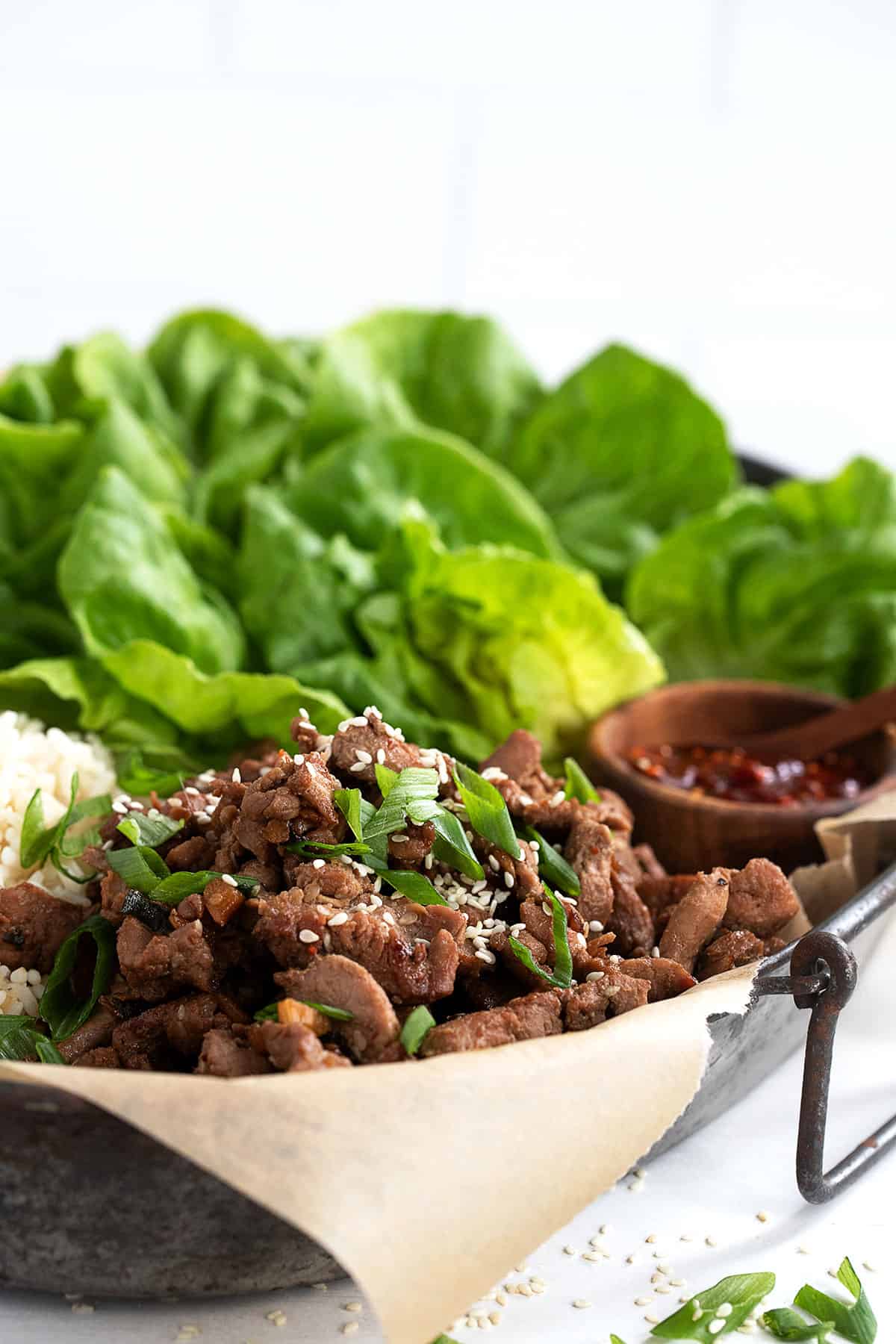
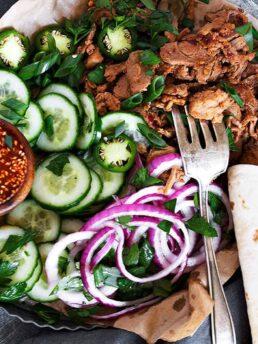
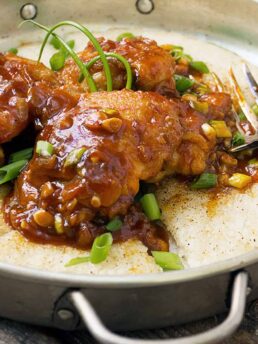
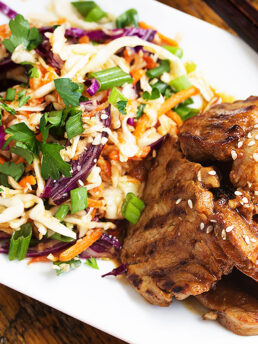

Could ground pork be used for this recipe? Meat prices where I am have become way too expensive so am trying to stick with what I already have in our chest freezer. I’m thinking if the tenderloin in your recipe has to be cut into little pieces anyway, ground pork should be a fairly decent substitute?
Thank you
Hi Joycelyn and absolutely go with the ground pork. It will be just fine. Enjoy :)
I can taste this already. Sounds up my alley. I will make this for lunch tomorrow.
Glad to hear, Pat! Enjoy :)